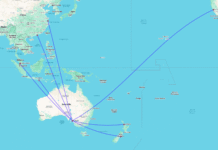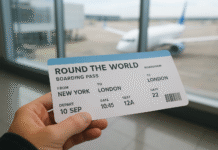Flying China Eastern Airlines flight MU709 from Shanghai Pudong (PVG) to Madrid (MAD) in the airline’s new business class product was a surprisingly satisfying long-haul experience that combined thoughtful service, upgraded comfort, and a touch of modern elegance. While it doesn’t reach the levels of luxury set by industry leaders like Qatar Airways’ Qsuites, China Eastern has clearly made significant strides in improving its premium offering, and for the fare paid, the value proposition is compelling.
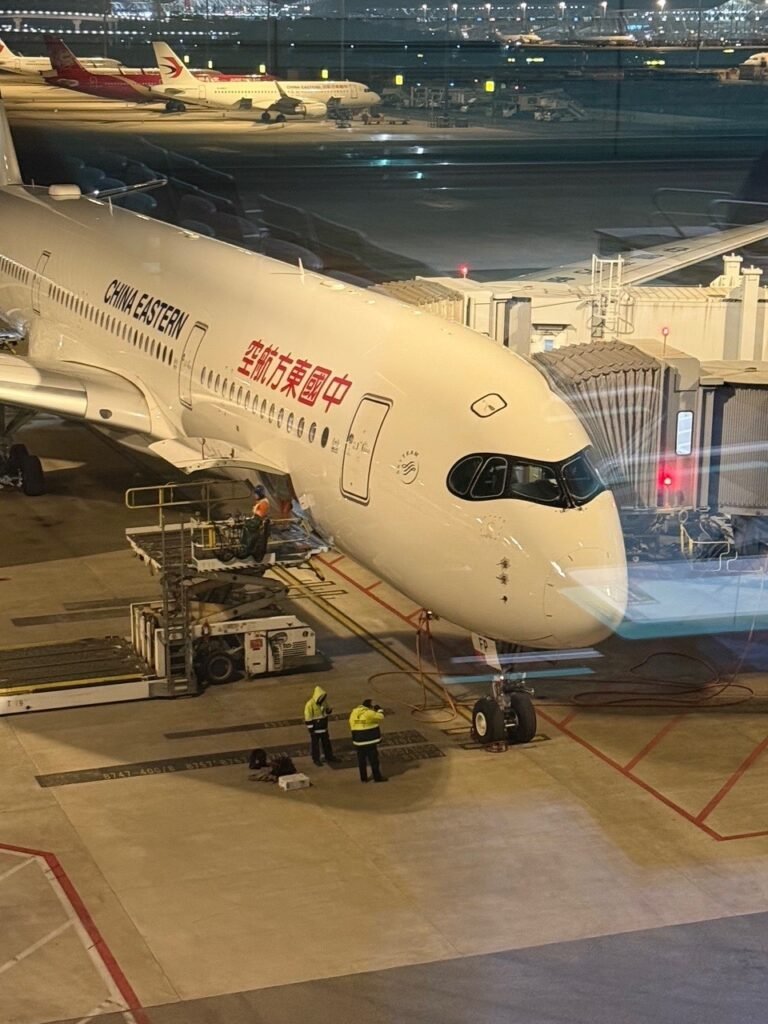
The experience began on a high note at Shanghai Pudong Airport. China Eastern’s private check-in area for premium passengers is a distinct upgrade from the main terminal. Separated from the chaos of regular check-in counters, this area feels like a peaceful lounge in its own right. With armchairs, soft lighting, and well-dressed staff who handle everything efficiently and with quiet confidence, the space sets the tone for a more refined travel experience. No queues, no noise—just a seamless process from entry to security clearance. It’s a strong first impression that shows China Eastern is investing not just in aircraft interiors but also in the overall passenger journey.
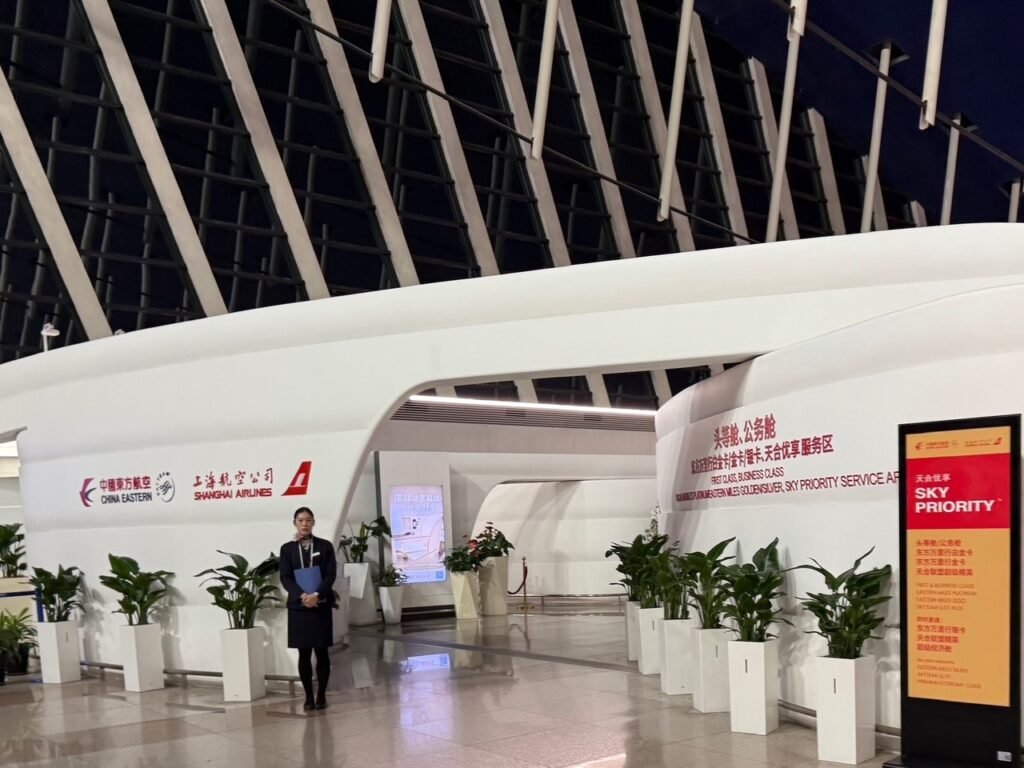
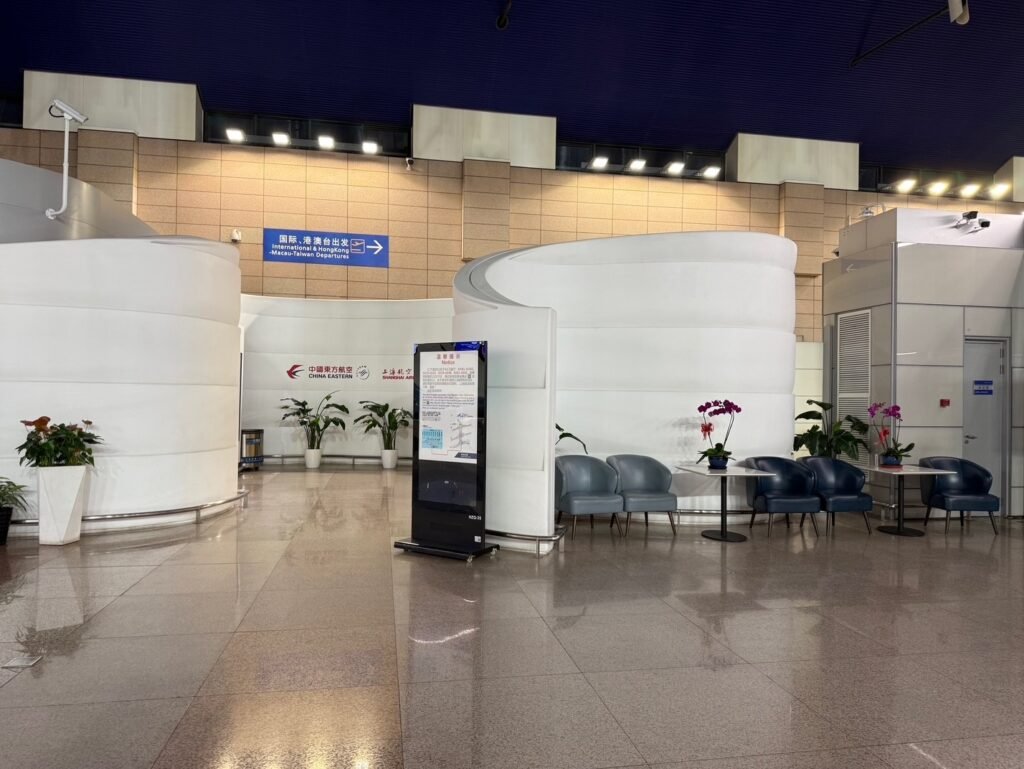

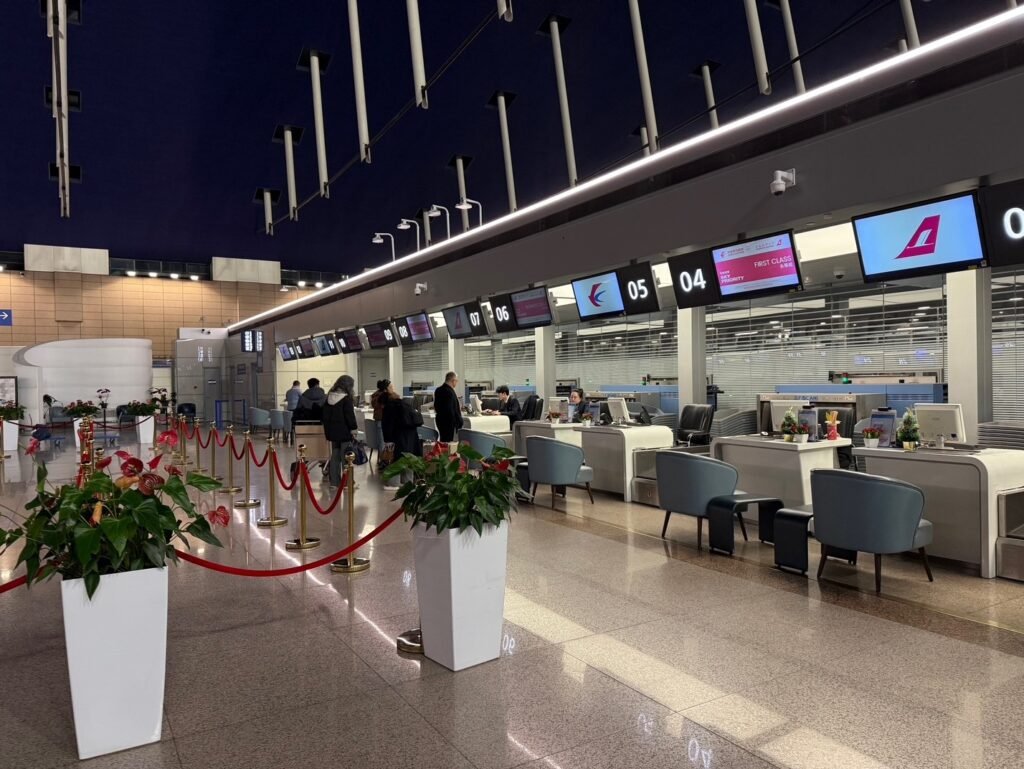
Following check-in, I made my way to Lounge 137, which I’ve reviewed separately, but it fit well within the premium ecosystem that China Eastern is trying to build. When it was time to board, the process was smooth and well-managed. Business class passengers boarded through a dedicated jet bridge and were welcomed at the door with smiles and offers of assistance. The cabin itself, featuring the airline’s newest business class seat, made an immediate visual impact. The seats are arranged in a staggered 1-2-1 layout, ensuring direct aisle access for every passenger—a crucial baseline for any modern business class. Each seat is enclosed in its own “suite,” complete with a sliding private door that provides a notable increase in privacy. The design is clean and modern, with tones of soft grey, charcoal, and muted blues, along with tasteful accent lighting.
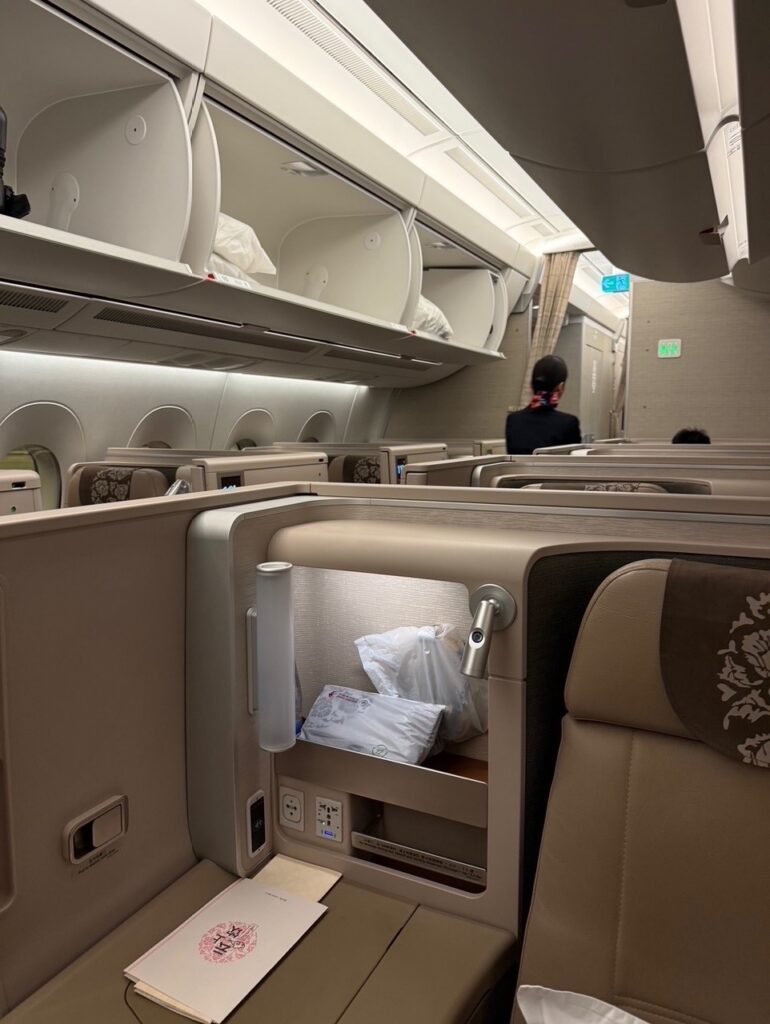
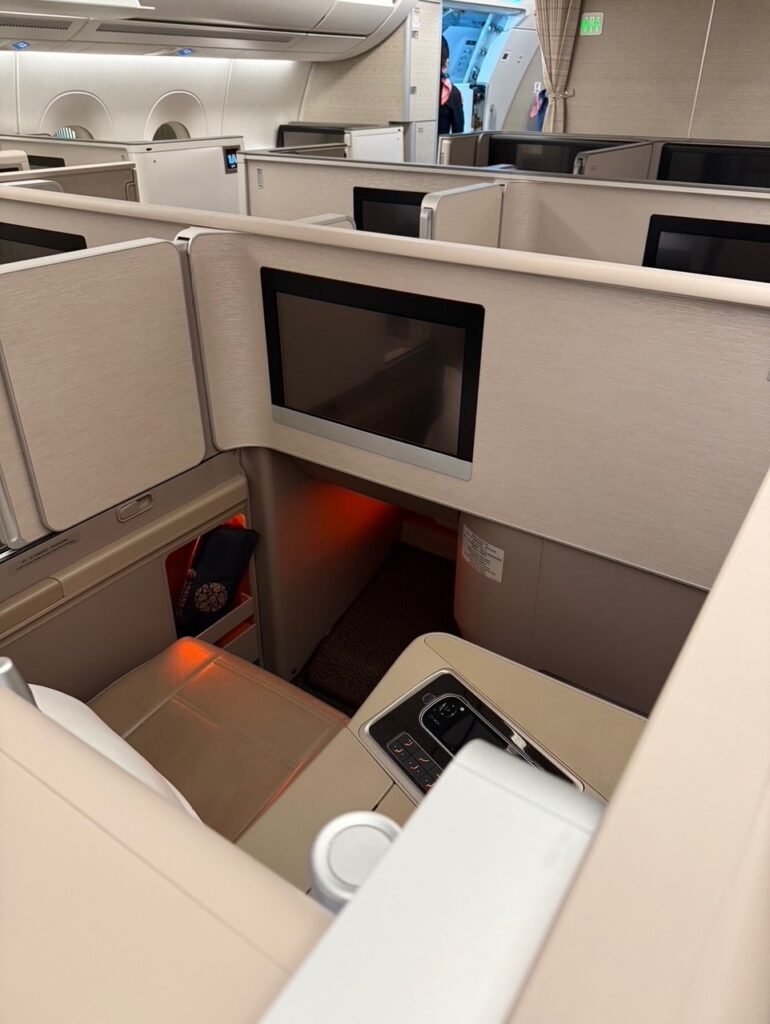
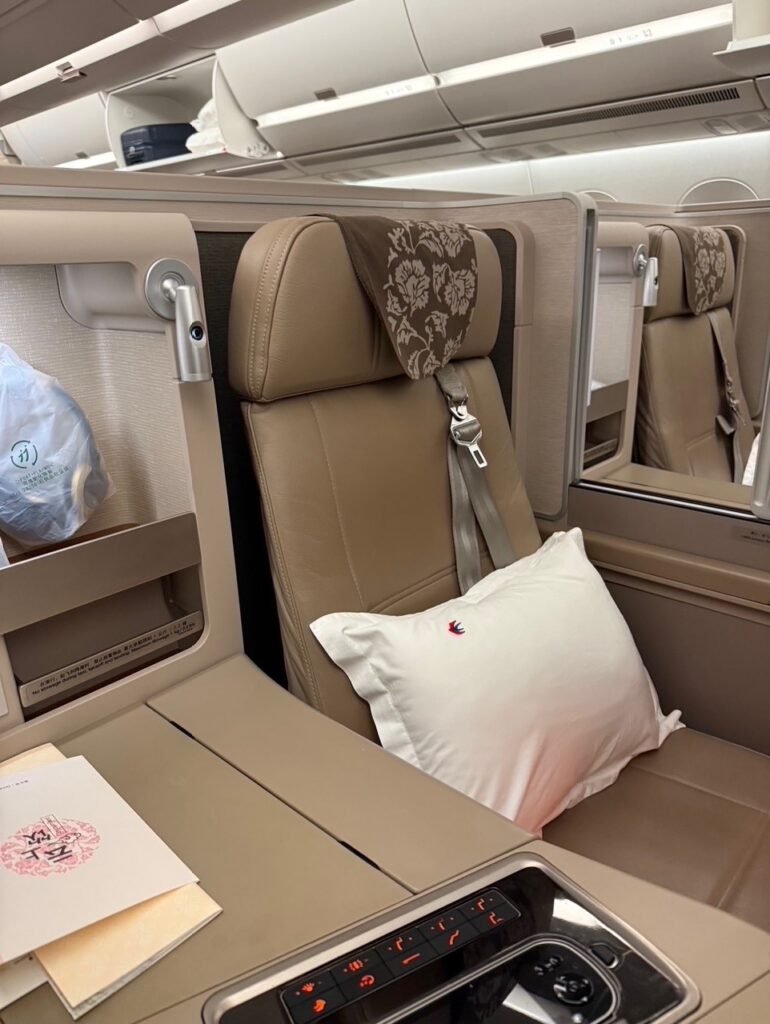

While the seat doesn’t match the innovation or intimacy of Qatar Airways’ Qsuites—which remain the gold standard in terms of layout, flexibility, and sheer luxury—China Eastern’s new business suite offers a surprisingly comfortable and functional environment. The suite feels spacious, with a wide seat that converts into a fully flat bed long enough for most passengers. The bedding provided was soft and breathable, and I appreciated the well-cushioned surface, which offered a comfortable sleep for several hours over Central Asia and Eastern Europe. The seat controls are intuitive, with multiple recline options, lumbar support, and a do-not-disturb feature that subtly lights up when activated.
Storage is generous, with compartments large enough for personal electronics, small bags, and water bottles. A large side table provides room for a laptop or meal tray, while the footwell is spacious enough to allow turning during sleep without restriction. The in-flight entertainment system features a reasonably large, high-resolution touchscreen loaded with a mix of Chinese and international content. While the library doesn’t rival those of Emirates or Singapore Airlines, there were enough options to keep most travelers entertained for a long-haul flight. A touchpad remote was also available and worked well. Wi-Fi was available throughout the flight and reasonably priced, although the signal did drop occasionally, especially over more remote regions.
Shortly after takeoff, the crew began the meal service, which was both well-paced and presented with care. Service throughout the flight was genuinely warm and courteous. The flight attendants addressed passengers by name, offered regular beverage refills, and maintained a professional but friendly demeanor. They seemed genuinely attentive, rather than just following procedure. Menus were distributed shortly after boarding, with a strong emphasis on Chinese cuisine. For the main meal service, I selected the abalone appetizer and braised pork for the entrée. The abalone was a standout dish—tender, flavorful, and plated with visual finesse.
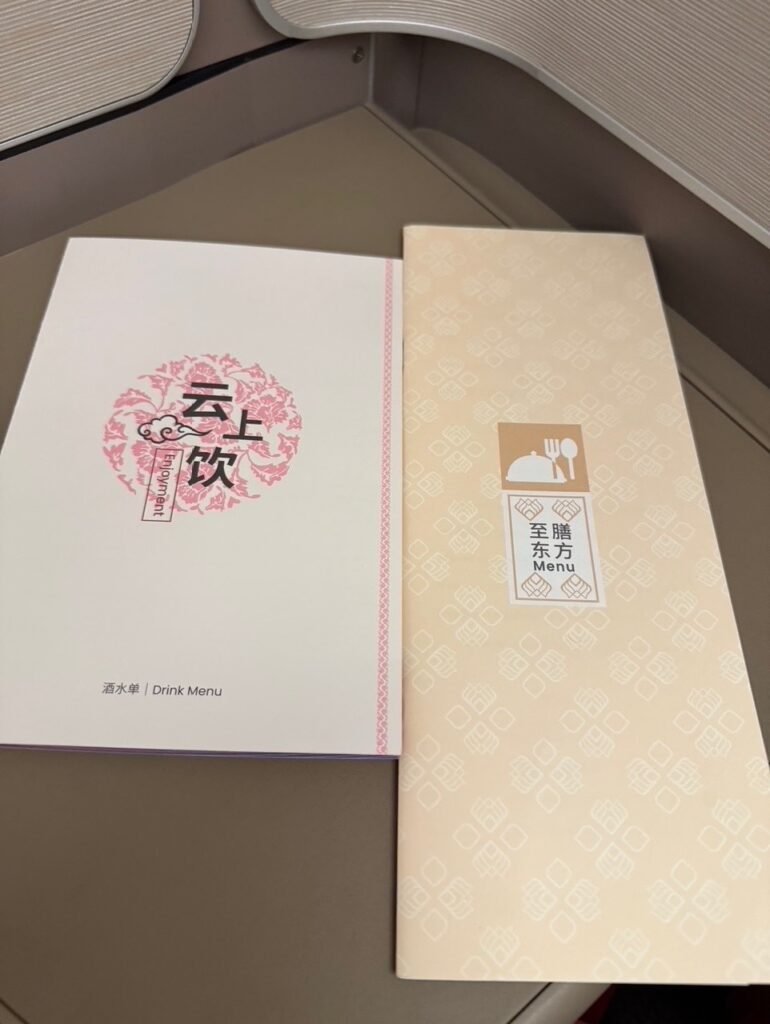

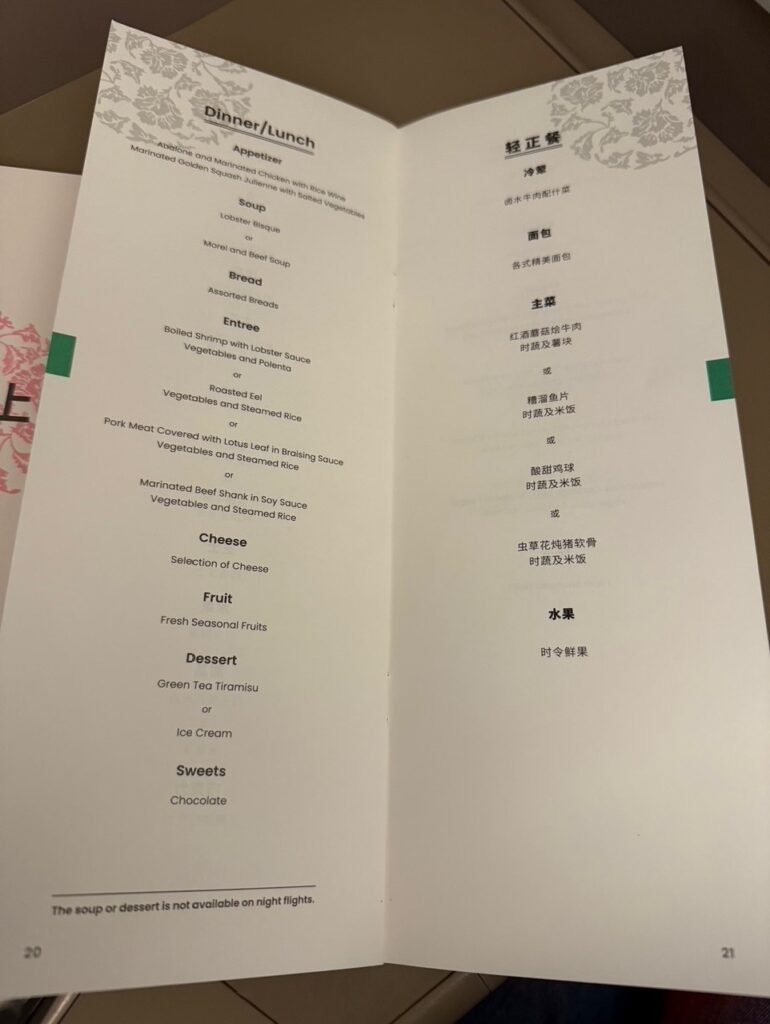
The braised pork was rich and deeply satisfying. A classic Chinese dish done well, it featured melt-in-your-mouth pork belly in a savory sauce, accompanied by steamed rice and seasonal greens. The portion was generous but not excessive, and the flavors were authentic, with no sense of the food being “dumbed down” for international palates. A small dessert followed, but the main dishes were clearly the highlight of the service.
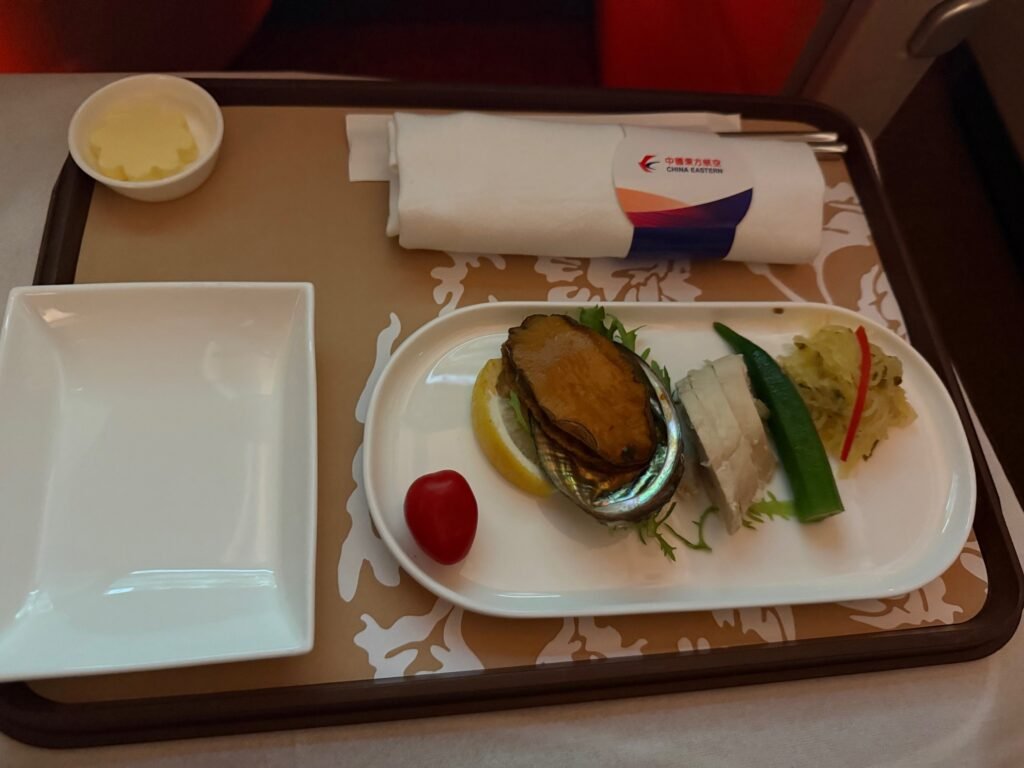
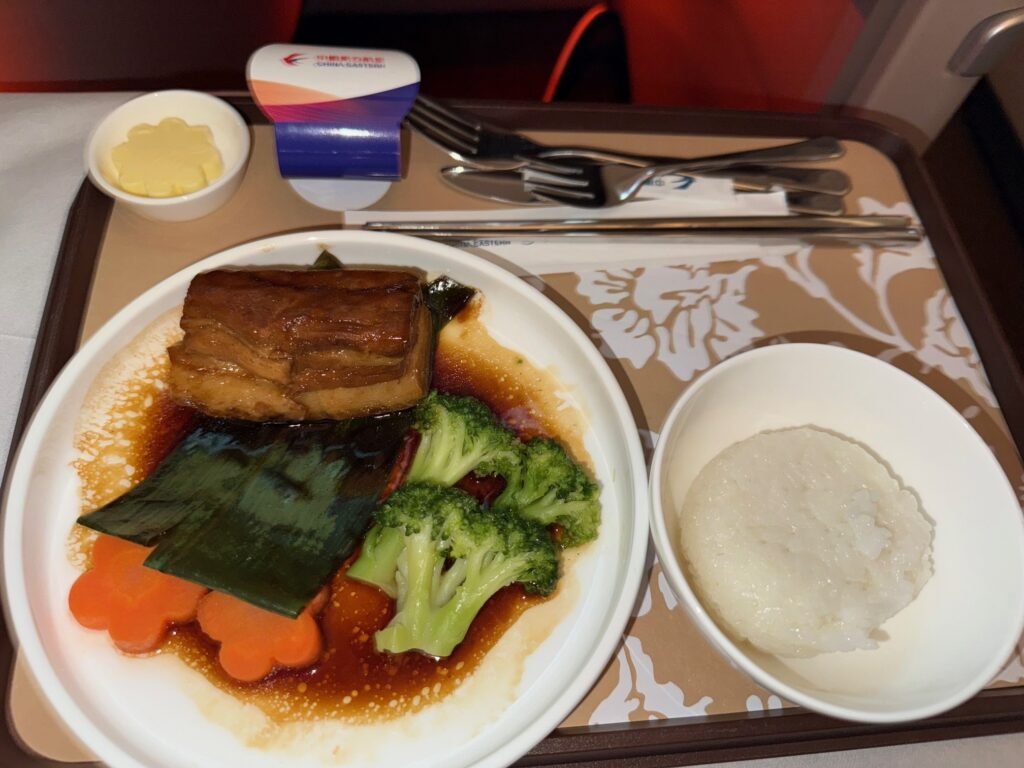


Throughout the flight, crew members regularly checked on passengers without being intrusive, and the cabin remained clean and well-maintained. After a restful sleep in the fully flat bed—assisted by the quiet cabin and the soft bedding—breakfast was served around 90 minutes before landing. I chose the Chinese breakfast option, which consisted of congee along with a selection of dim sum. The congee was smooth, subtly seasoned, and accompanied by small side dishes like pickled vegetables and peanuts. The dim sum selection included a steamed dumpling, a bun, and a small sticky rice parcel, all served warm and fresh. It was a comforting way to start the day and a nice contrast to the typical Western breakfast offerings.
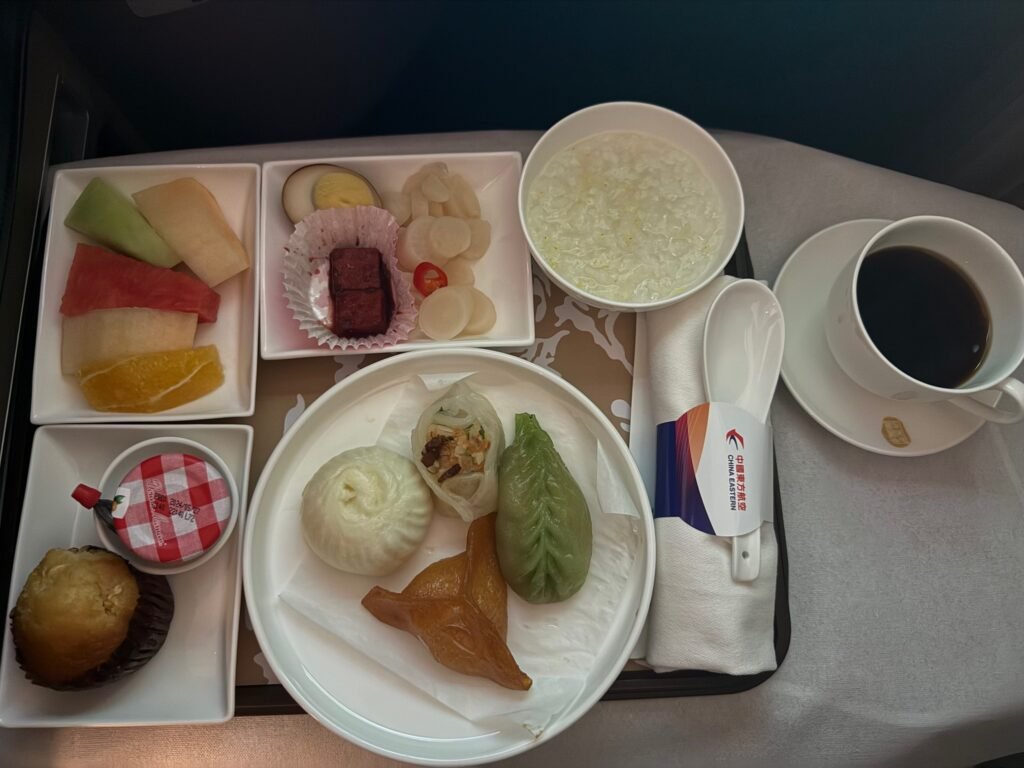
Arrival into Madrid was smooth, and immigration procedures were quick. Reflecting on the overall journey, the new business class product on China Eastern’s MU709 stands as a substantial improvement over its older configurations. While it falls short of top-tier offerings like Qatar Airways Qsuites—which offer more personal space, more thoughtful design features like rear- and forward-facing options, and unmatched flexibility for traveling companions—China Eastern’s suites are a solid and commendable middle-tier product. The sliding door, while not as high or fully enclosing as Qsuites, still provides a welcome degree of privacy and is more than sufficient for solo travelers or those wanting to shut out the cabin.
What makes this flight especially noteworthy is the value. China Eastern often prices its business class fares significantly lower than those of leading Gulf or European carriers, especially on long-haul routes to Europe and North America. For the price paid, the experience punches well above its weight. The airline has clearly focused on the aspects that matter most: comfort, privacy, food, and service. While there are areas where it could further improve—such as expanding the IFE library or refining the finishes of the suite—the core elements are there. The private door adds a premium touch, the food highlights the airline’s cultural roots, and the crew delivers a polished service that leaves a lasting impression.

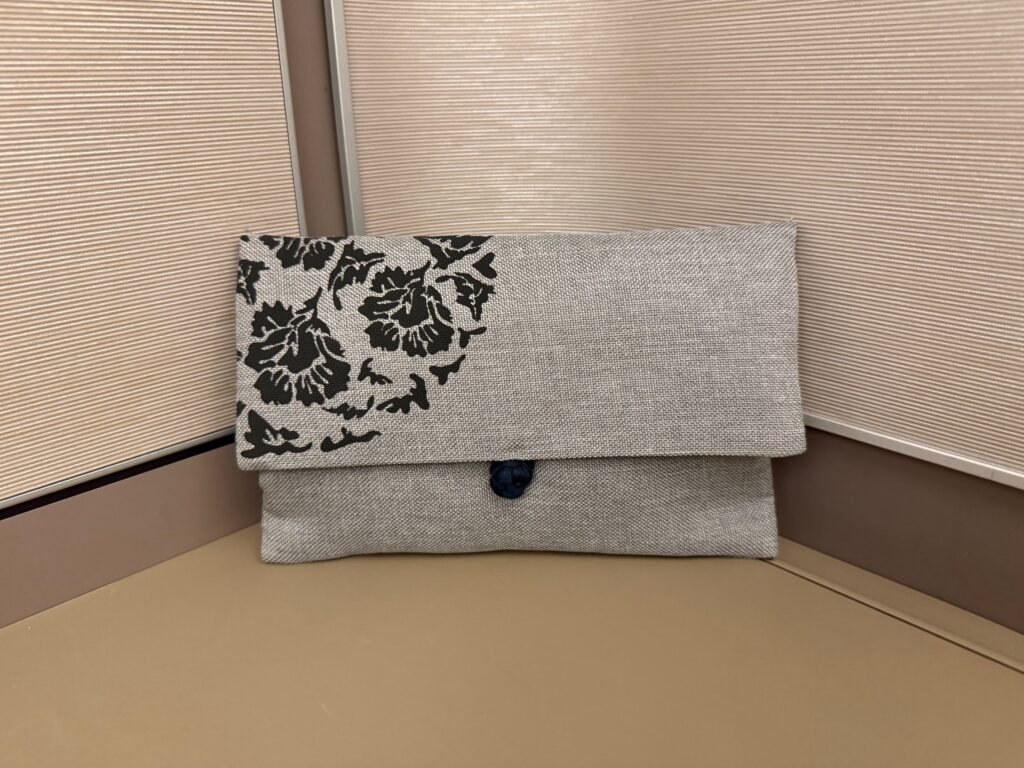
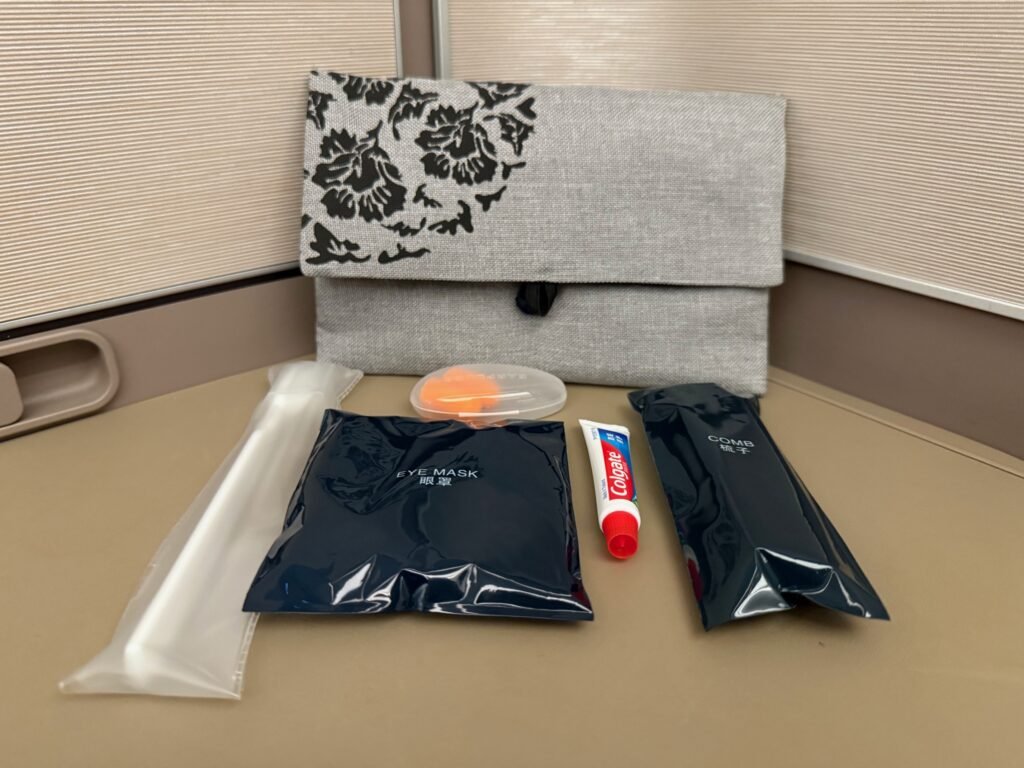
In summary, China Eastern’s new business class is not a revolution in the same way that Qsuites were when they launched, but it’s a clear evolution for the airline and a strong offering in the mid-premium tier. For travelers looking for a comfortable, private, and well-serviced way to cross continents without breaking the bank, MU709 offers a surprisingly competitive product. I would happily fly it again—and that in itself is the best endorsement.

